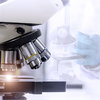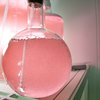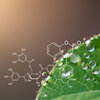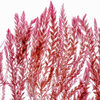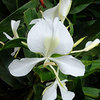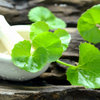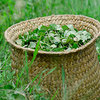Plant extraction
From the source to the active ingredient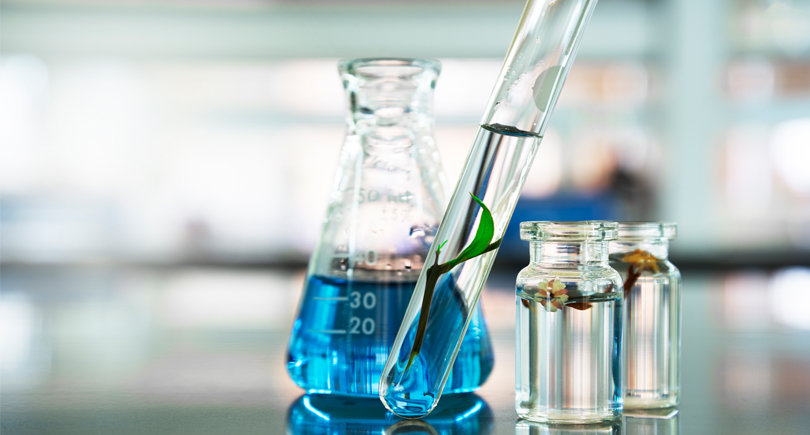
Seppic has a wealth of expertise extracting active ingredients from plants. The goal is to create extracts that are effective, while also socially and environmentally respectful. Its Lons and Pontrieux sites have mastered the plant supply chain and plant extraction process. As such they are capable of creating diverse types of plant extracts that reveal the full extent of nature’s treasures, from the biological activity of a pure phytochemical compound, to the efficacy of a plant totum. Plant extraction technology serves active ingredients for cosmetics, active ingredients for nutraceuticals, and TECA™ for dermopharmacy.
Local resources and know-how
Seppic Lons specializes in the extraction of terrestrial plants, in particular from Madagascar, while Seppic Pontrieux has expertise in marine biotechnologies and the extraction of marine plants and algae, specifically from the Bréhat archipelago in France.
Seppic Lons is a pioneer in valorizing purified active ingredients from Malagasy plant resources for use in pharmacy and cosmetics. The upstream development of active ingredients draws on ethnobotany, a discipline that studies the relationships between humans and plants. This transmission of traditional cultures and uses, predominantly orally, has resulted in a collection of plants supplemented by bibliographic studies and phytochemical analysis in the laboratory. Although Madagascar is its main source of plant resources and co-products today, Seppic Lons is also establishing other channels around the Indian Ocean and Mediterranean basin, applying an access and benefit-sharing model and respecting biodiversity.
Located in an area of high algal biodiversity between the Bréhat archipelago and the pink granite coast, Seppic Pontrieux processes seaweed and coastal plants under a fair and local sourcing approach. In addition to marine biotechnologies that avoid the collection of marine plants, the marine plants and algae collected by Seppic Pontrieux for extraction come from harvests respecting best practices approved by local authorities and ensuring traceability.
Extraction of a purified compound
Seppic Lons’ historic expertise in the extraction of purified compounds dates to the 1950s during a Franco-Malagasy collaboration to develop and purify triterpene molecules from the dried leaves of Centella asiatica – known for their pharmacological properties for healing wounds.
The process of extracting, separating and purifying the triterpenes from Centella asiatica draws on many specific, and complementary, techniques mastered by Seppic Lons. These include the resin separation, precipitation, crystallization, and purification by separative liquid chromatography.
Using a common process and purification steps, various active triterpene osidics and aglycones can be produced from Centella asiatica:
- TECA™ titrated extracts consisting of a mixture of genins and asiaticoside, carefully studied for pharmacological properties, in pharmaceutical (GMP) and cosmetic grades,
- Genins or aglycones in a mixture higher than 97%, and the isolated asiatic acid molecule of more than 95%,
- Heterosides consisting of asiaticoside and madecassoside in a mixture higher than 70%, with each molecule purified to more than 95%.
With this technology it’s possible to obtain compounds with a high purity level, with different substantiated biological activities.
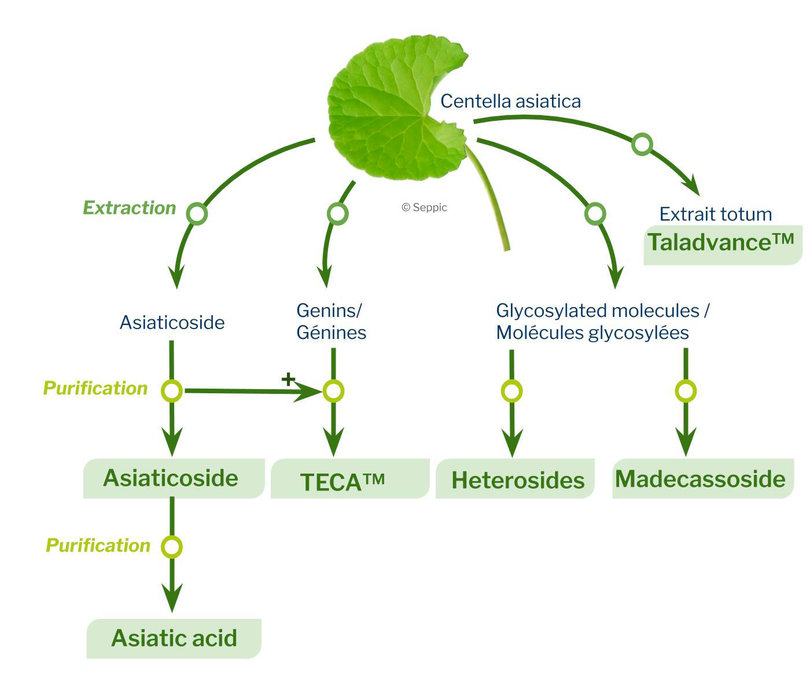
Extraction of a totum
Another approach is to consider that phytochemicals in both terrestrial and marine plants exhibit complementary biological activities that can be used for beauty and well-being. In this holistic philosophy, so-called totum extracts (all the substances contained in the plant) offer access to the primary and secondary metabolism of plants. Our expertise in phytochemistry makes it possible to discover interesting compounds while also ensuring the safety and quality of an extract placed on the market.
For example, Seppic developed the active cosmetic ingredient Sakadikium™, which originated in rhizomes of the invasive Madagascan plant Hedychium coronarium, and has an interesting polysaccharide composition. It is developed using hydroalcoholic extraction technology in multiple stages: precipitation, concentration, and stabilization with glycerin. The design of this ingredient was bio-inspired by the rhizomes, the plant's energy reserve organ, to propose a cutaneous biological mechanism around mitochondrial energy.
|
Scientific communication |
Eco-extraction
Conscious of our environmental and societal impact, eco-extraction is being developed to offer innovative and effective extracts that are increasingly respectful of the environment.
Alternative solvents such as supercritical fluids, bio-based solvents, intensification processes such as microwaves and extrusion, and the optimization of extraction and reprocessing conditions, are all key elements of eco-design, which limit energy and water consumption, and waste generation.
The recycling of co-products is also a method of eco-extraction being explored in our Innovation laboratories.
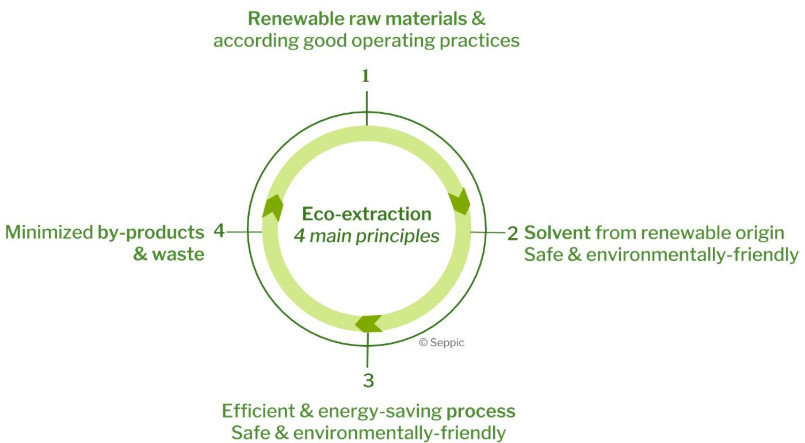
Seppic innovates by eco-designing active ingredients
The active cosmetic ingredient Aspar’Age™, bio-inspired by the communication mechanisms of sea hares, has been eco-designed to optimize its biomarker content, its bioactivity and its dose in formulations, while minimizing its environmental impact. A self-preservation system for this water-soluble extract was obtained by using a bio-based solvent, while also maximizing the biomarker content.
Sepibliss™, another active ingredient dedicated to dietary supplements, and eco-designed in partnership with a producer in the south west of France, has been developed from coriander seeds using extrusion technology to access a premium quality oil without the use of organic solvents.

